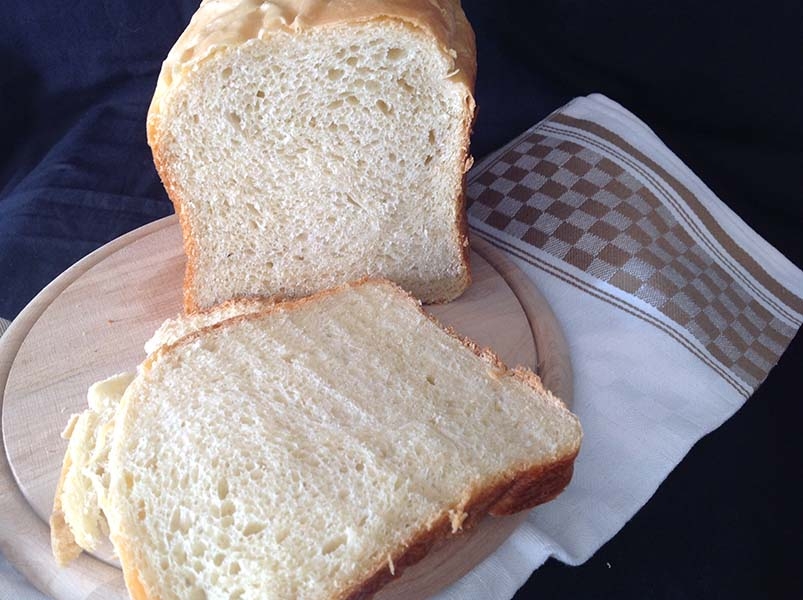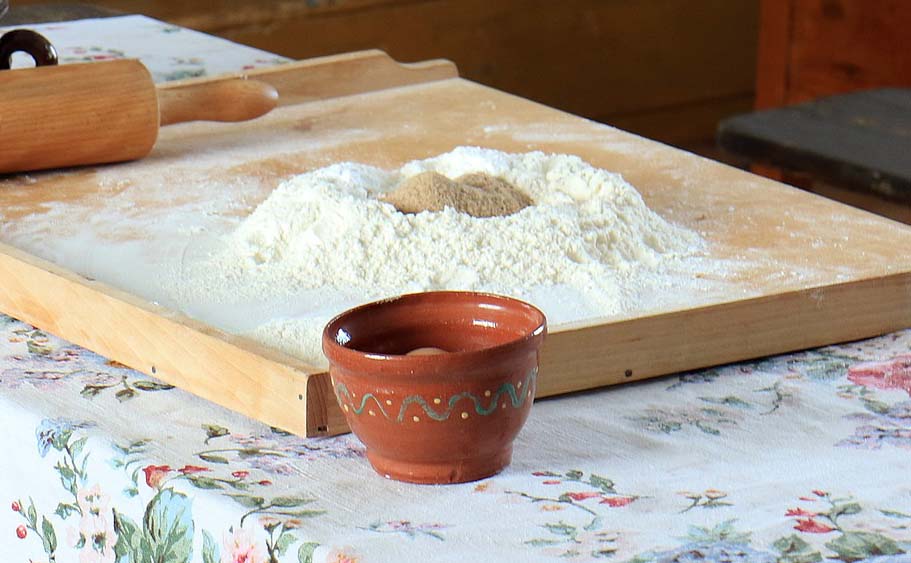Bread and it’s shapes... Sliced bread!

Today we end our articles on bread... next month we will begin to explore the magic world of lunch! Did ancient civilizations eat lunch? How did the ritual of lunch evolve from the times of the ancient Romans to the present? We will find out in our next articles.
There is an Italian saying “essere buono come il pane” which is similar to our English saying - to be as good as gold… why do they say that? Maybe because there is nothing more genuine, sincere and natural than good bread… especially homemade bread… and what aroma manages to stun us and unleash images and memories more than freshly-baked bread?
Our nostrils become filled with the inebriating smell, our mouths begin to water and we’re filled with pleasant sensations.
Not everyone has in their childhood memories the break-making ritual… some people surely were lucky enough to live those magic moments, when the women in the family gathered around the table to make bread together.
It wasn’t hard or boring work, it was considered a pleasure, a time of sharing, a celebration of life, starting with the natural yeast or the starter, which was always cared for and loved like a little baby.
With three simple ingredients, flour, water, and yeast, an alchemy of forms, flavours, scents and tastes can be created. In Italy alone, for example, there are countless types of bread, and bakeries today look like designer stores where there is so much variety that it’s difficult to make an easy choice.
There are types and names of breads that represent old traditions, here are a few:
the brazadei, made with rye and produced in the Valtellina area in the region of Lombardia; the coppia ferrarese which is a crunchy bread made with a strong dough in the Romagna region; the pane di Matera which is a specialty of the Lucania region; the pane umbro di Terni which is well known even in other regions;
the pane di Tramatza, a small town in the province of Oristano in Sardinia, which is a white bread shaped like a circle; the pane scuro di Marocca, named after the small town in the province of Massa-Carrara where it originated; the pane valdostano, made with rye; the Muffuletta, a sicilian bread made in the month of July in honour of the feast of Saint Calogero in Agrigento; the pane Munizione (ammunition bread) of the Vercelli area, which gets its name because it was the daily bread ration given to soldiers in the Napoleonic era;
the pane di Genzano which is a specialty of the town with the same name located in the Castelli Romani of the Lazio region; the Piè Armesta which is one of the many types of piadine in the Romagna region; the Puccia, a soft little round roll of the Puglia region, flavoured with olives;
the Biovone all’Alva’ made in the town of Savigliano in the area of Cuneo, traditionally made by farmers with natural yeast; the rosetta (little rose), a typical bread of the Veneto region, which gets its name from its rose shape, made with flour, water, yeast, lard, oil, egg whites and sugar;
then there are the many taralli, grissini and freselle known and produced all over Italy, which have a long conservation time, are crunchy and have a biscuit flavour.
A type of bread, though, that arrived in Italy from overseas is the sliced bread.
In 1928, an American engineer, Otto Frederick Rohwedder, invented a machine that produced, sliced and packaged bread. This great news made the front pages of the local Missouri Chillicote Constitution-Tribune.
Later on, it was thanks to the multinational company Wonder Bread that this sliced bread gained popularity in 1930. It is widely used here in Italy too now, and we must admit it is extremely practical. We all know how good simple things can be, and it’s really easy to prepare at home, we’ll explain how.
sliced bread, ingredients:
250 grams of strong flour
250 grams of wheat flour
10 grams of bread yeast
250 millilitres of milk or soy milk
2 tbsps of malt
50 millilitres of olive oil
1 tsp of salt
 We mix the yeast in half a glass of water, we make a small crater in the flour and start making our dough, adding the milk slowly.
We mix the yeast in half a glass of water, we make a small crater in the flour and start making our dough, adding the milk slowly.
If you’re lactose intolerant you can use soy milk.
Halfway through, we add the sugar and finally the salt. When the dough is almost ready, we add the oil and continue kneading until it is nice and smooth.
We put it in a bowl, cover it with plastic wrap, and leave it to rise until it has doubled in size.
Then we take the dough, we flatten it out with our hands, and shape it into a rectangle which we then roll and place in a buttered bread-baking pan. We cover it with plastic wrap and leave it to rise again.
When it has doubled in size, we brush the top with milk and bake in a pre-heated oven at 180° for 45 minutes. Once it is done, we leave it to cool really well, at least half a day, before we slice it... stuff it… and bite into it!
(foto e English translation di Tina Ferraiuolo & Cristiana Ordioni,pixabay)
Articolo in italiano Il pane e le sue forme… Sliced bread!